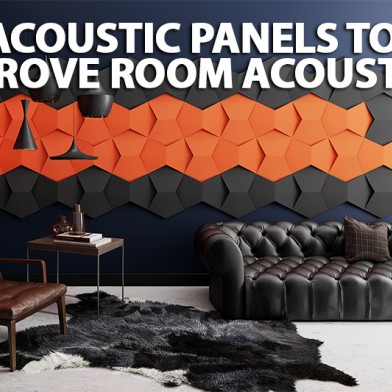Acoustic panels to improve room acoustics
- 23 September 2020 18:54:55
- Reviews: 0
- Views: 781
-

Modern acoustic panels to improve the acoustics of the room allow you to create an atmosphere in it, in which the sensations of sound will be as close to reality as possible. In addition, the panels can even change the sound streams, for example, in specific rooms such as home cinemas, professional and home recording studios, conference rooms, meeting rooms and others. By definition, the main task of acoustic panels is to reduce the reverberation time of sound waves.
In practice, this means that sound waves are reflected from surfaces a minimum number of times and intersect with each other. This leads to the formation of the purest possible sound coming from its source (speakers, voices, and so on). Acoustic panels to improve the acoustics of the room are currently made, as a rule, from acoustic foam rubber. This material allows you to control sound waves. Accordingly, with the proper arrangement of foam rubber panels, it is possible to achieve the sound of the required quality and timbre in the room.

The use of acoustic panels made of the specified foam rubber allows not only to improve the sound quality in the room, but also to achieve the correction of sound waves in it. In particular, it is very convenient, since the equipment, for example, of a sound studio with the help of acoustic panels, will properly allow you not to carry out complex repairs in the room. This is all the more true if the premises in which the recording studio is located is located in a rented premises. Therefore, it remains only to select the acoustic panels correctly and in the proper quantity and arrange them in the room accordingly. For the correct arrangement of panels in a recording studio or in other rooms, there are special calculation formulas. Therefore, before installation, it is necessary to determine the place of installation of the panels.
Acoustic panels differ in the place of their application, as well as in geometric dimensions. So, the panels are for mounting on walls and mounting on the ceiling. The base thickness is also different. Most often on sale there are acoustic panels with a thickness of 30 to 70 mm. Accordingly, the thicker they are, the more they muffle the sound. The standard sizes of acoustic panels are 500 x 500 mm and 500 x 1000 mm. Therefore, when choosing a particular panel, it is advisable to consult with the seller.



